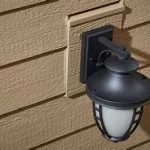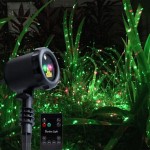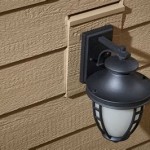Essential Aspects of Residential Outdoor Lighting Design
Outdoor lighting is not only crucial for safety and security, but it also adds ambiance and beauty to your home. Designing an effective and aesthetically pleasing outdoor lighting system involves considering several key factors. This comprehensive guide will explore the essential aspects of residential outdoor lighting design.
1. Define Your Purpose
Before starting your design, determine the primary purpose of your outdoor lighting. Whether it's for safety, security, ambiance, or a combination of these, understanding your goals will guide your decisions.
2. Consider Your Landscape
The existing landscape elements, such as trees, shrubs, and water features, should influence your lighting design. Utilize trees to cast shadows and create dramatic effects, while illuminating water features enhances the ambiance.
3. Plan for Different Lighting Zones
Divide your outdoor space into different zones based on their function and lighting needs. Consider creating zones for pathways, patios, pools, and seating areas. Each zone requires specific lighting intensity and coverage.
4. Choose the Right Light Fixtures
Selecting appropriate light fixtures is essential for both functionality and aesthetics. Consider the style of your home, the desired ambiance, and the wattage and beam angle of the fixtures.
5. Layer Your Lighting
Layering light achieves depth and interest. Use a combination of ambient lighting, task lighting, and accent lighting. Ambient lighting provides overall illumination, task lighting illuminates specific areas for practical use, and accent lighting highlights architectural features or landscaping elements.
6. Use Lighting Controls
Lighting controls allow you to adjust the intensity and duration of your outdoor lighting. Dimmers create ambiance, motion sensors enhance security, and timers ensure lighting is only used when necessary.
7. Consider Environmental Impact
Opt for energy-efficient LED fixtures to minimize energy consumption. Use shields or downward-facing fixtures to reduce light pollution and create a more pleasant environment for both you and your neighbors.
8. Pay Attention to Details
Small details can make a big impact in outdoor lighting. Use a variety of textures and materials in fixtures, add a splash of color through colored filters, and consider using light to create shadows and patterns.
Conclusion
By carefully considering these essential aspects, you can design an outdoor lighting system that meets your functional and aesthetic needs. With a well-planned outdoor lighting design, your home will not only be safer and more secure but also become a welcoming and inviting space to enjoy all year round.

5 Beautiful Garden Lighting Ideas Landscape Design Backyard Outdoor Lighti Exterior House Lights

Stylish Outdoor Lighting Ideas For Home Design Cafe

Outdoor Lighting Can Make A Huge Difference If Well Thought That Is Why We Gathered Some Residential Landsc Exterior Artistic Patio

Outdoor Wall Lighting Ideas For Your Beautiful Home In 2024

Architectural Home Facade Lighting For Bungalow

Designing A Landscape Lighting System Ideas Advice Lamps Plus

Design Guide For Your Home S Outdoor Lighting

Exterior Lighting Trends In 2024 Residential Outdoor Stfdd

Title 24 Residential Lighting Technology Center

16 Watt Led Outdoor Wall Up Down Left Right Cube Light Warm White Ashish Electrical







